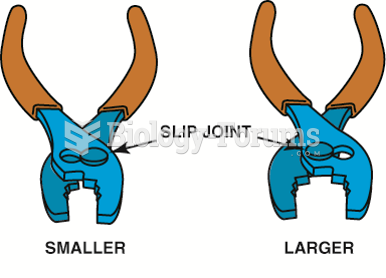|
|
|
One way to reduce acid reflux is to lose two or three pounds. Most people lose weight in the belly area first when they increase exercise, meaning that heartburn can be reduced quickly by this method.
Most fungi that pathogenically affect humans live in soil. If a person is not healthy, has an open wound, or is immunocompromised, a fungal infection can be very aggressive.
According to the FDA, adverse drug events harmed or killed approximately 1,200,000 people in the United States in the year 2015.
More than 34,000 trademarked medication names and more than 10,000 generic medication names are in use in the United States.
The first monoclonal antibodies were made exclusively from mouse cells. Some are now fully human, which means they are likely to be safer and may be more effective than older monoclonal antibodies.
 Typical slip-joint pliers are common household pliers. The slip joint allows the jaws to be opened ...
Typical slip-joint pliers are common household pliers. The slip joint allows the jaws to be opened ...
 A. Open portable massage table on its side. B. Straighten out legs completely and check that leg ...
A. Open portable massage table on its side. B. Straighten out legs completely and check that leg ...





